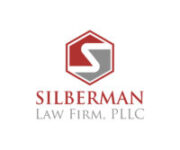
Almost all Texas commercial leases include a section that provides a Texas landlord with a lien on the tenant’s fixtures and personal property. Often, these contractual liens are overlooked by both landlords and tenants until there is a default by the tenant. The below is an example of pertinent language from a typical landlord’s lien clause.
As security for payment of Rent, damages, and all other payments to be made by Tenant as required herein, Tenant hereby grants to Landlord a lien upon all goods, wares, equipment, fixtures, and furniture of Tenant now or subsequently located upon the Leased Premises or Center.
While this clause may seem innocuous at first glance, it can be a powerful tool for the landlord in the event of default by a tenant with valuable equipment stored on the premises. These types of contractual liens are governed by Article 9 of the Uniform Commercial Code (codified in the Texas Business and Commerce Code) and are a type of secured transaction. Article 9 of the U.C.C. provides a streamlined process for the TX landlord to take possession and sell or otherwise dispose of a commercial tenant’s property to satisfy unpaid rent by the tenant. This article will discuss some best practices and basic steps to foreclose on a landlord’s contractual lien.
When the Lien Attaches
A contractual landlord’s lien attaches when the lien becomes enforceable against the debtor with respect to the collateral. Tex. Bus. & Com. Code Ann. § 9.203 (West). The concept of attachment is really very simple with respect to a commercial landlord’s lien. Effectively, the lien attaches when the tenant and landlord have a fully executed lease with a contractual landlord’s lien and the tenant places the collateral on the premises.
Perfection
Perfection of a landlord’s lien is a step that is almost always overlooked by the landlord, landlord’s broker, and property manager. In 99% of situations, after the tenant and landlord execute the lease, it is placed in the landlord’s file never to be looked at again unless there is a problem. While lien perfection is not a required step to enforce a security interest against a tenant, it is important for establishing rights in the collateral against third parties. 66 Tex. Jur. 3d Secured Transactions § 154. For example, failure to perfect a lien on the tenant’s property may have adverse consequences should the tenant file for bankruptcy or should the tenant later pledge the equipment as collateral for a future loan.
To perfect a lien on a tenant’s personal property, the landlord must file a UCC-1 (commonly referred to as a financing statement). The UCC-1 is a short form that is filed with the Texas Secretary of State and generally does not require the landlord’s signature. The best practice is file the UCC-1 after the lease is fully executed. Additionally, it is important to note that should the landlord desire to perfect a lien against tenant fixtures (items that are physically attached to the real property), the landlord should also file in the real property records where the property is located. Tex. Bus. & Com. Code Ann. § 9.501 (West).
Possession and Foreclosure
Taking possession of personal property is often not a problem where a tenant leaves expensive equipment behind after abandoning the premises. However, in some situations, a landlord may need to take possession from a tenant occupying the premises. This can be done through judicial action or can be done without court intervention if the landlord can do this without breaching the peace. Tex. Bus. & Com. Code Ann. § 9.609 (West).
Generally, after a landlord takes possession of collateral, the landlord will wish to sell or lease the collateral to offset rent owed to the landlord. Prior to holding a public or private sale of the collateral, the landlord must provide notice (called a Notice of Disposition under the code) to the debtor and all parties that have security interests in the collateral. Tex. Bus. & Com. Code Ann. § 9.611 (West). This is a simple notice that allows the debtor to redeem the property by paying the debt owed prior to disposition of the collateral.
Conclusion
Supervision of perfecting and foreclosing a contractual landlord’s lien should be done by a competent real estate or business lawyer. Landlords and property managers should seek guidance and training from an attorney when implementing the foreclosure process to avoid liability and waiver of landlord rights.
All information provided on Silblawfirm.com (hereinafter "website") is provided for informational purposes only, and is not intended to be used for legal advice. Users of this website should not take any actions or refrain from taking any actions based upon content or information on this website. Users of this site should contact a licensed Texas attorney for a full and complete review of their legal issues.
